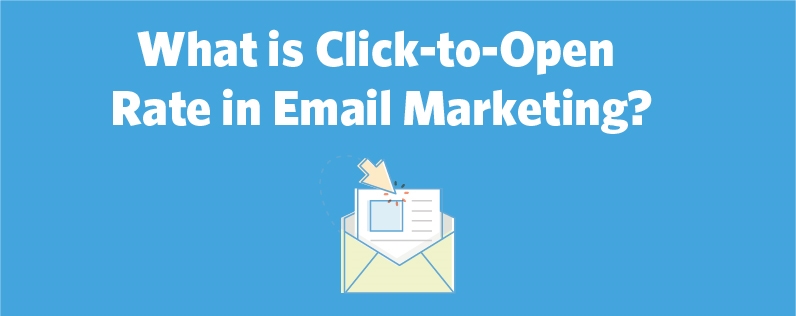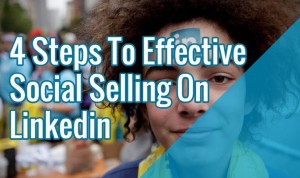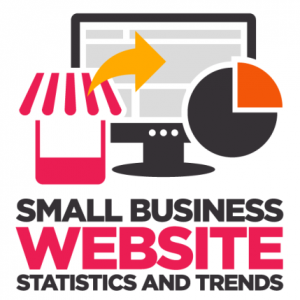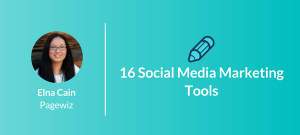— December 8, 2018

When we send emails to customers, our main goal is not for them to simply open the email, but to read it in its entirety and engage with our business. For this, we need to make sure our subject lines are clear, the email content is engaging, and customers can comfortably read the email, whether on their desktop or mobile device.
The cool thing about email marketing is that you can get all kinds of data and insights about your customers through email reports. Every campaign you send has the ability to provide certain nuggets of data that show an idea of what readers like in your email and what makes them click through to your website.
A good email strategy is the perfect blend of effective subject lines, engaging content and images, and the right balance of send frequency, all building around what works for your business.
Before you send your next email, pause for a moment and ask yourself: “What is the goal of my email marketing strategy?” Once you have your goal, the next thing you need to do is figure out what metrics to track in order to keep progressing towards that focused goal. Learn the right metrics below to keep your email marketing strategy focused.
Key email metrics to keep yourself focused
You need to know which metrics will help you create a perfect email marketing strategy. These aren’t the only indicators of optimal email performance, but they’re a good start:
Total sent: The total number of emails sent to your contacts.
Email Open rate: The percentage of customers who opened your emails.
Click-through rate: The percentage of customers who opened your email and clicked a link within your email.
Email Conversion rate: The percentage of customers who followed through the action toward which your email pointed. For example, if the goal of your email is for customers to download a free eBook, the percentage of downloads will create your conversion rate.
Bounce rate: The percentage of emails that didn’t make it to the intended recipient’s inbox.
Unsubscribe/Opt-out rate: When one of your customers no longer wants to receive your emails, so they remove themselves from your list.
Together these email marketing metrics tell the story behind your email, and answer the question: “Do my customers care about what I’m sending in my email marketing campaigns?”
CTOR levels the playing field
There’s one more often missed, but equally important, metric to add to those mentioned above: click-to-open rate (CTOR). CTOR measures the relevancy and context of an email. It is calculated by the number of unique clicks divided by the number of unique opens. For example, if your email receives 100 clicks and 150 opens, your CTOR is 66%.
CTOR is different than click-through rates (CTR) because the CTOR is based on the number of people who opened your email, rather than your entire recipient list.
Keeping a close eye on your CTOR allows you to determine if your content actually resonates with your customers after they opened your email messages. Even if CTOR is not perfect, it’s better than only tracking opens or CTR, because it adds context that helps you understand the level of engagement in your list, and it can help guide your content decisions.
According to an email benchmark report by Smart Insights, a good CTOR varies, with most email marketing benchmarks putting it somewhere between 20 and 30%. A better guide is to self-benchmark, tracking your CTOR for each campaign type over time. For example, track your CTOR for newsletters, drip campaigns, promotional campaigns, transactional emails, each email in an automation series, and so on. By identifying the best and worst performing campaigns, you can determine an acceptable range for CTOR for your business, and then chase improvement goals through content and creative optimizations.
Tips to improve your CTOR
Now that you understand click-to-open rate and why it’s an important metric, here are a few tips on how to make your marketing emails more engaging:
1. Keep it concise
Your audience won’t always have the time to read your entire email. A newsletter that’s two lines long can be just as effective as one that’s 6,000 words long, if not more effective. Make sure your content is high quality and highly valuable, to keep customers engaged in what you’re sending.
People read online content, like your emails, differently than books or magazines. Structure your email in easy-to-read chunks, put the most important piece of information first, use an image to grab their attention, and include valuable links to more content.
2. Incorporate more personalization
Personalization helps your emails rise above the noise by talking directly to your customers. When customers receive an email, the first thing they notice is the subject line. They may check the ‘From’ name at the same time, but the subject line is what influences whether or not your reader is going to open your email.
That’s where personalization in email subject lines comes into play. Are you on a first name basis with your customers? Do you know their interests? Using what you already know about the customer can tip the odds of an open email into your favor; this is especially important when sending marketing emails.
3. Focus on the customer
It’s important to remember that different customers have different needs. Segmenting your contacts allows you to put together lists of people who share the same interests. By taking this extra step, you’ll be able to send targeted content that is even more valuable to each of your groups of customers maximizing the effect of your email marketing efforts.
When you’re dividing your audience into segments, make sure to remember the stage of their customer lifecycle, whether they’re a new customer or one who left something in their cart. A little extra effort when segmenting can go a long way.
4. Use dynamic content
Imagine your favorite online retailer sent you an email with a discount coupon that expires in the next 24 hours, but you’re unable to view the email on your mobile. One of two things will happen: you would either curse the business and delete the email, or, much less likely, you’d rush to a computer to view the email there.
Do you really want your customers to feel the same way? Of course not.
Make sure your readers see exactly the right information by using dynamic content. Using what you know about your recipient, you can display the right content for their interests, even whole sections of text, images, or call-to-action buttons–all based on the reader looking at the email. The more the content resonates with your reader, the more likely they are to click through.
5. Have one clear call-to-action (CTA)
Customers get really confused when an email links to multiple things. Do you want them to download your eBook or check out the interesting video? Subscribe to your blog or follow you on social media?
It helps if your CTA buttons all are working towards the same goal, like driving traffic to your website or asking readers to download your eBook, but avoid pushing customers to both at one time. Asking customers to complete multiple actions will only reduce clicks.
6. Review your results
When you are analyzing your email campaign metrics, CTOR is great for gauging how effective or valuable your email content appears to customers. If you see high open rates, but low CTOR rates, this indicates that you nailed the subject line, but left more to be desired on your offer or the copy within your email.
However, tracking the other metrics as well helps to find a balance between a perfect email open rate and click-to-open rate. Each metric has merit, so strive for both.
Is email marketing really worth your time?
To really be in control of your marketing, it’s crucial that you know how to interpret the results of your email campaigns.
Start by taking a look at the open rates and click-through rates of your latest email campaigns. Then, compare your results with averages in your industry.
Use smart marketing metrics to guide your email marketing strategy
Email metrics are essential to make sure you’re on track towards the goals you’ve set. Use your email insights and reporting to know what’s working well and what needs improvement. Remember, your emails and subscribers aren’t static, so keep experimenting to find what works best. Knowing what works and what saves time, effort, and money in the future, so get excited about email metrics that guide your way to successful email marketing!
Digital & Social Articles on Business 2 Community
(63)







